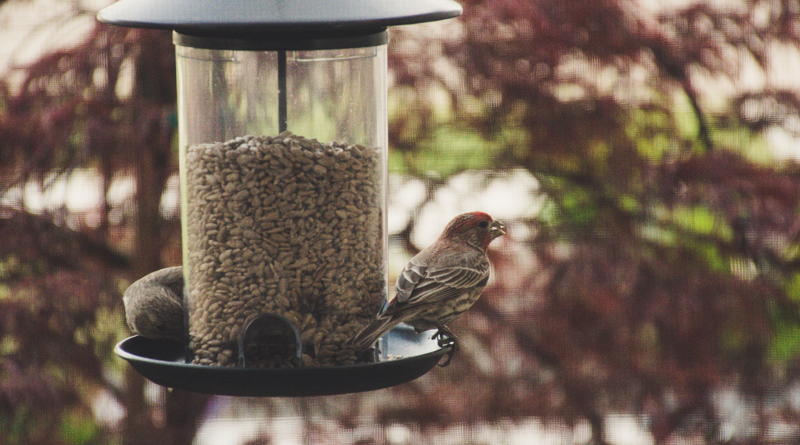A HORDE OF SPARROWS – Life In The Outdoors

I looked out the dining room window one morning and was astounded at the sparrows; house sparrows. They covered the ground, as numerous as dead leaves in the fall. They lined every branch of the bush near the window. They crowded the bird feeder.
I read in Birds of America that house sparrows gather in immense flocks. I’d seen flocks of house sparrows before but I’d never seen a flock as big as this.
There were other birds also, flying in and out to the feeder. I saw two tree sparrows. There were two cardinals and a blue jay. There was a black-capped chickadee, a tufted titmouse and a few goldfinches.
House sparrows, though one of the most common birds of North American, are not native. They’re birds of Great Britain and Europe. They were first introduced to America in 1851 in Brooklyn. There were many other introductions in other cities. They accepted their new homes readily, raised multiple broods, two, three, four in the spring and summer and spread rapidly across the continent. Now the house sparrow is one of the most common birds of North America.
When introduced to America the house sparrow was called English sparrow. In the first edition of Roger Rory’s book of A field Guide to the Birds of North America, published in 1934, Roger Rory Peterson listed both names calling it house or English sparrow. English sparrow was the name I learned when I was a boy.
When the Naming Committee of the American Ornithologists Union prescribed house sparrow as the correct name I accepted that and started calling the bird by that name. I didn’t consider the name sparrow but there has been disagreement over that name also.
The house sparrow is not of the same family as sparrows of North America: song sparrow, chipping sparrow, vesper sparrow, white-throated and white-crowned and many more. It’s a bird of a family of finches, not American finches but birds that don’t occur in North America. In England and Europe, to distinguish between the house sparrow and American sparrows the house sparrow is called an old world sparrow.
There’s a visible difference between the house sparrows and American sparrows. It’s slight, but the difference is clear. Look carefully at a house sparrow and another sparrow on your bird feeder and the house sparrow is fatter. Its legs and neck are shorter and it looks as if has no neck, that its head is on its shoulders.
The house sparrow is a bird of a family of a kind of finches that are not found in America, and that introduces another naming conundrum. A gathering of sparrows is a host of sparrows according to the terminology of birders. But what if the birds are named sparrow but are not true sparrows, like the birds that made such a spectacle in my yard one unforgettable day?
There are house sparrows at my bird feeders every day except when the weather is particularly bad, when there is a strong wind and heavy rains or snow. There are house sparrows on my feeders now, both the feeder outside the dining room window and the feeder outside my study window. There are house sparrows on the ground and in the bushes and trees around the feeders. But there aren’t as many as there were on that day when they covered the ground, lined the branches of the bushes and trees in the yard and crowded the feeders outside the dining room window.
- Birds As Weather Forecasters – Life In The Outdoors - December 17, 2021
- Rare Bird Spotted In Indiana – Life In The Outdoors - October 8, 2021
- MY EXPERIENCE WITH DEER – Life In The Outdoors - July 30, 2021


